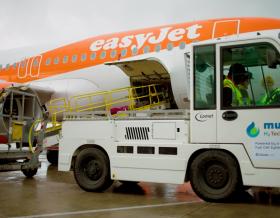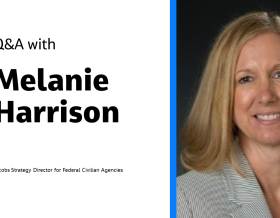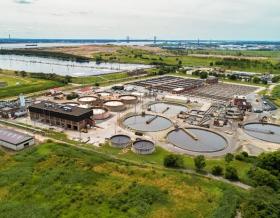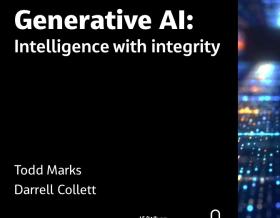
Over the past four months, Jacobs has partnered with Resilient Melbourne to deliver a series of three events focused on how we can utilize emerging technologies to help Melbourne “Survive, Adapt and Thrive.” The aim of the series was to explore global learnings in a local context, and to bring together stakeholders from diverse backgrounds to advance conversations that matter across topics that are critical to the resilience of Melbourne. These included how we might embrace new construction technologies for low cost housing, to how we can use modelling technologies to plan the city’s response to increasing climate vulnerabilities. The series concluded in November with the final instalment featuring a keynote by Jacobs’ Global Solutions Director for Transport Planning Stephen Rutherford. Stephen explored how big data analytics can help us navigate the dynamic and complex nature of cities to plan transportation networks that are both efficient and equitable.
In the opening of his keynote, Stephen highlighted the shared challenges facing many cities around the world: growing populations, urbanization, limited funding and increasing congestion. As the fastest growing city in Australia, soon to overtake Sydney as its largest city, Melbourne is one of those cities. Much of Melbourne’s growth is occurring on the outskirts of the city while high-value jobs are concentrated in the central business district (CBD); with over 70% of Melburnians choosing to commute via private vehicle, traffic congestion is already recognized as a major problem. It is an important time for the city to consider how the current system needs to evolve to reduce congestion and ensure improved and equitable access to employment opportunities.
Adding to these challenges is the impact of emerging transportation technologies, such as electric and autonomous vehicles. Often touted as a potential solution to congestion, Stephen emphasized that research is beginning to suggest that these emerging private transport options might instead increase the overall number of car-based trips as people often choose ride-sourcing travel options over public transport, cycling, walking or not taking a non-essential trip. Stephen outlined how city planners and decision makers are beginning to draw on big data analytics to assess and manage the complexities and dynamic nature of cities, travel choices and individual preferences. He highlighted the role big data plays in the provision of transport solutions from three angles:
- 1 - Planning. Big data can help us to better understand current transport trends and plan more effectively for the future. Stephen outlined the basis of Project Edmond (Estimating Demand from Mobile Network Data), where Jacobs, in collaboration with O2 and AECOM, is working with Transport for London (TfL) to provide transport demand-related data and information for London using big data analysis technology. Anonymized, aggregated mobile network "event data" is fused with a diverse range of complementary data sets to better understand travel patterns across London and thereby inform investment priorities.
- 2 - Behavior change. Understanding what people do and why they make certain choices can help us to influence behaviors through “nudge-style” design. Stephen explained how road user charging might be effective in reducing congestion in a major city. He highlighted the shortlisted Wolfson Economics Prize submission in which Jacobs and Volterra outlined an app-based concept titled “Pricing for Prosperity. ” The concept proposed that London replace its current congestion charges with a single charge that consists of three elements – congestion, environmental and maintenance. The logic behind this solution is that, by providing citizens with more information about potential routes and the impact and associated costs of their choices, we can nudge them towards making more sustainable choices.
- 3 - Integration. Big data allows us to make network-wide decisions and is critical in helping us to move towards an integrated approach that concentrates on the individual citizen, rather than the mobility or service operator. It is impossible to make informed decisions regarding future transport network investment without considering the opportunities and impacts that these investments present.
The subsequent panel discussion which comprised specialists from state government, academia and the automotive industry, emphasized many of the themes raised at the previous two events. These included the importance of cross-sector partnerships to unlock opportunities and challenging our key drivers of decision making with a focus on social equity. The strongest theme evolved around how big data can help to challenge our current approach to mobility, not only from policy-making and infrastructure-design perspectives, but also by helping us to understand the motives behind travel habits of individuals. As Stephen noted, habit is a strong driver of transport choice. For many Australians, this means driving personal vehicles despite having access to more efficient and sustainable modes. He also emphasized that issues such as congestion are often not caused by a lack of infrastructure, but by habit; he challenged the audience to occasionally make an active attempt to step outside their comfort zone and trial an alternate travel option.
In line with this, the panel discussed the importance of understanding why people are habitual in their transport choices and the critical role of big data in helping government and transport planners investigate the barriers to behavioral change. There was unanimous support for the idea that big data can help generate insights into the why of habits and barriers to change. For example, Dr. Crystal Legacy, from Melbourne University’s School of Design, pointed out that for many women, walking, cycling or taking public transport can feel much less safe than driving, which highlighted the need to draw on data from diverse groups of people when planning new transport infrastructure.
The CEO of Public Transport Victoria in Australia, Jerome Weimar, also noted that one in five Victorians experience some form of disability, and many of these people may feel they do not have a choice other than to be a passenger. This is largely due to unfamiliarity of new routes and uncertainty about whether the associated infrastructure will meet their needs. Big data therefore plays an important role in creating a safe and comfortable environment that meets the diverse needs of the Victorian population, thereby allowing them to trial new travel options, as opposed to being captive to one mode of transport. For example, Elizabeth Kim, general manager for mobility at Royal Automobile Club of Victoria, discussed the organization’s new mobility app that draws on geographic data to better inform disabled users about the characteristics of unfamiliar locations.
One audience member suggested that we needed to reconsider our whole approach to congestion and ask why we must travel at all. The panel discussed how companies can influence transport congestion by reconsidering employment density and by enacting flexible working policies, either by allowing employees to work from home, or scheduling a day that might better suit their needs. For example, allowing employees to arrive at work at 11am and leave after 6pm would likely help to reduce inner city congestion. Cities could also trial “car-free” zones by closing the CBD to non-essential vehicles and focusing on improving pedestrian and cycling mobility. This approach is becoming increasing popular globally, from Europe, to China and even the U.S. Another consideration is creating large employment zones close to where people live rather than requiring employees to travel into the center of a city. The Victorian Government is currently considering several of these employment clusters.
Today, with advances in big data analytics, we are in a stronger position than ever to tackle congestion and trial new approaches to mobility. Big data can help us educate citizens and overcome habitual barriers that have previously been difficult to identify and tackle. At the same time, it can better inform transport network planning and design in a way that reflects the needs of a diverse population and, ultimately, help our citizens embrace new modes of travel with confidence. Jacobs is looking forward to continuing our work with industry to challenge traditional approaches and design future networks that help our cities thrive.
About the author
Jacobs’ Business Development Manager for Built Environment Richard Ebbs has studied and worked in city and economic planning, policy and regulation throughout Europe, Asia, America and Australia. He is currently Business Development Leader for the Built Environment based at Jacobs in Melbourne.
























































